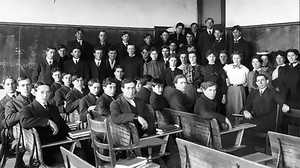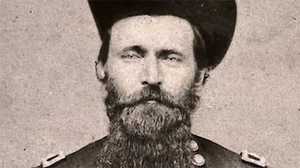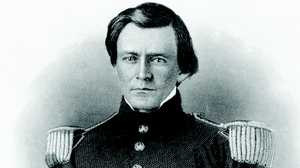Ulysses Grant lived in the public limelight from his first battlefield successes in 1862 until his death in 1885. Browse these pro- and anti-Grant political cartoons, spanning his military and political careers, and investigate the range of popular opinions about Grant and the major issues of his time.
-

President Abraham Lincoln's chief opponent for re-election in 1864 was General George B. McClellan, whom Lincoln had relieved of command of the Union Armies twice before. Here, the timid McClellan is contrasted with his successor, the ferocious bulldog "Lieutenant General" Grant, who enjoyed Lincoln's full support in his aggressive effort to capture Richmond (the doghouse) and destroy the Confederates (cowering dogs led by Confederate president Jefferson Davis and General Robert E. Lee).
Credit: Library of Congress -
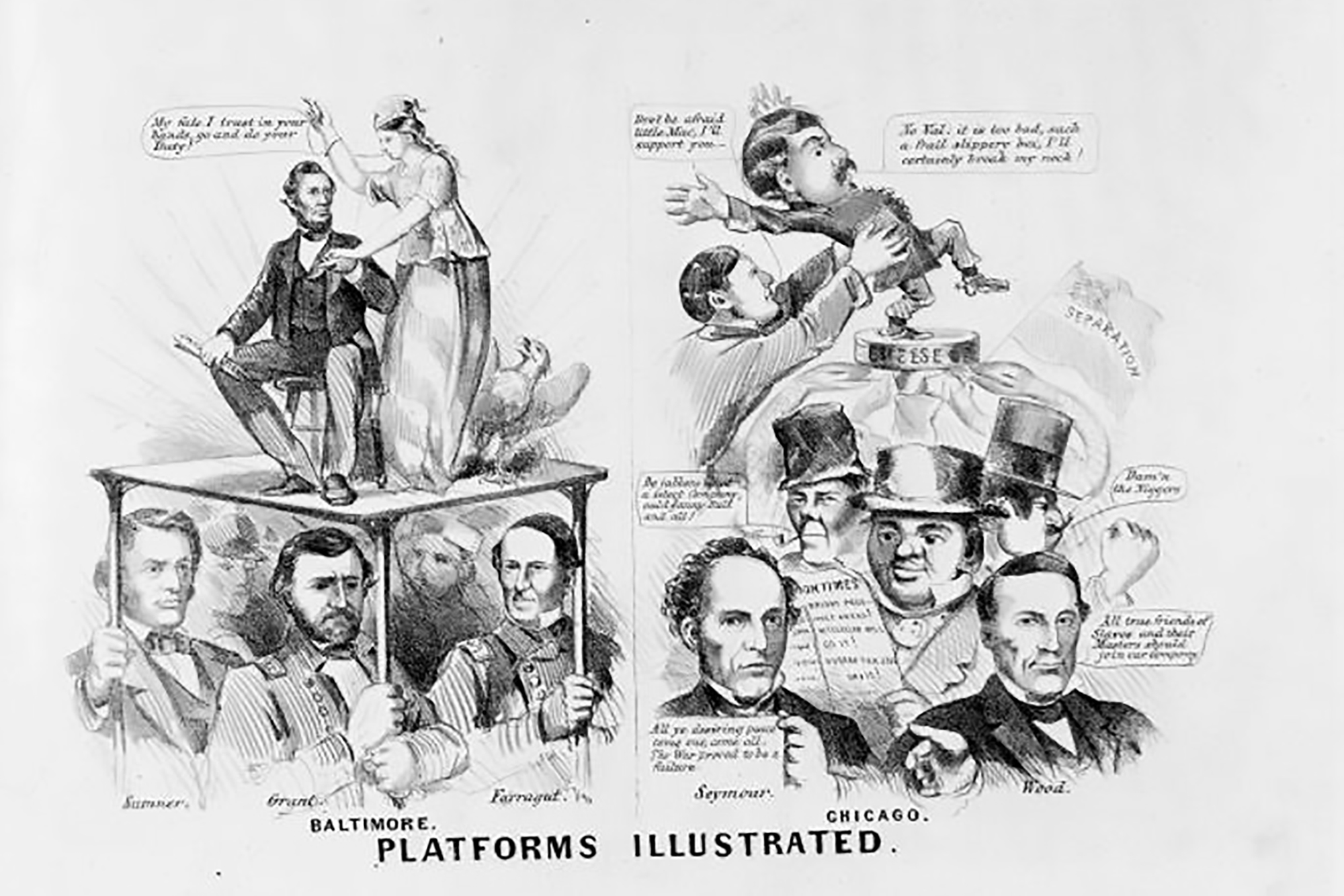
In this image, the artist praises the Republican party while ridiculing the Democrats. In Baltimore, the Republicans re-nominated Abraham Lincoln, who here enjoys the blessings of Lady Liberty and the support of Gen. Grant, Admiral David Farragut, and Massachusetts Senator Charles Sumner. The caricatured Democratic nominee, Gen. George B. McClellan, is thrust onto a precarious platform made of cheese, the handiwork of the Lincoln-hating Northerners who favored a quick peace with the South.
Credit: Library of Congress -
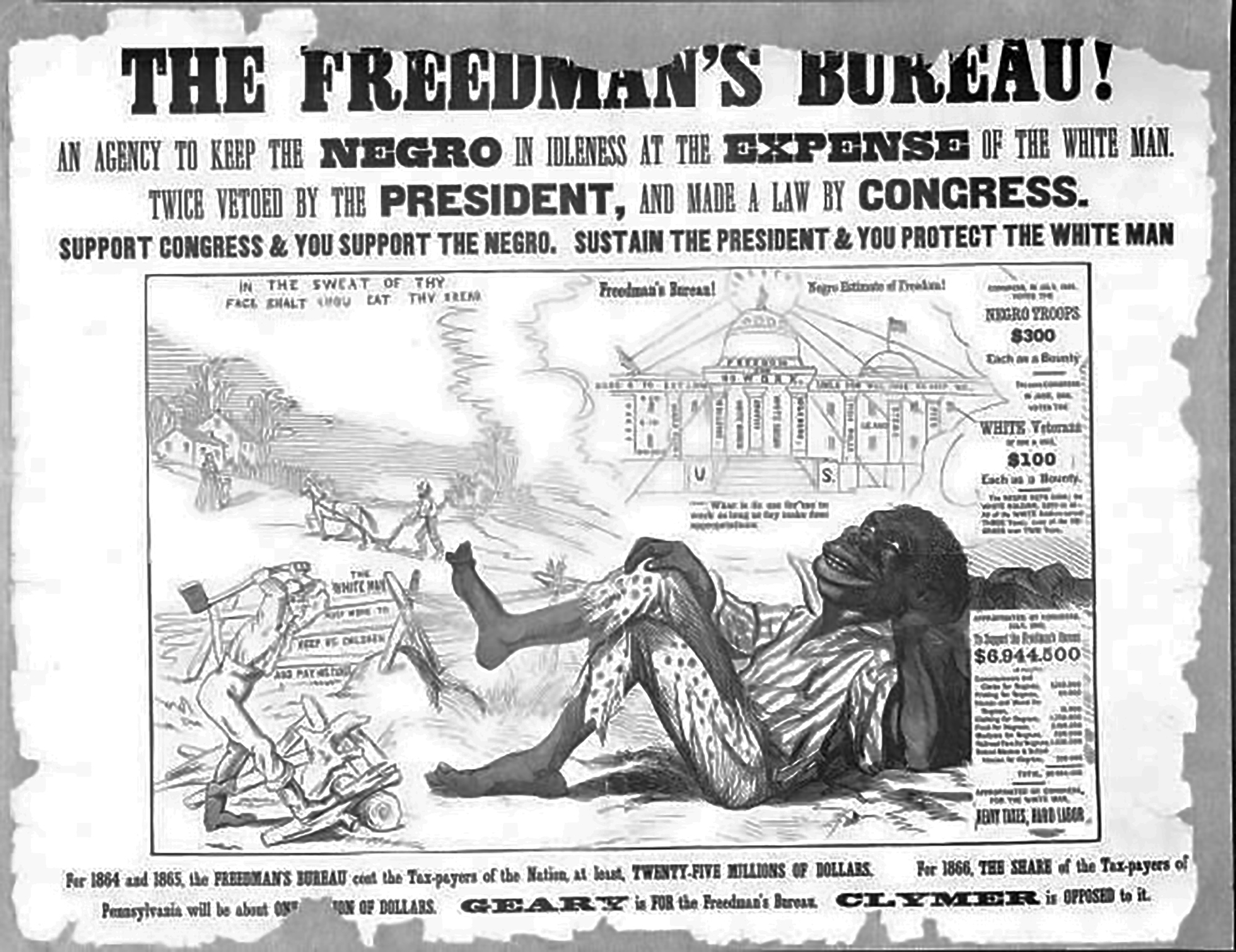
This was one of a series of racist posters supporting white-supremacist Hiester Clymer in the Pennsylvania governor's race in 1866. The caricature of an ex-slave lounging idly while white men work captures the argument against the Freedman's Bureau, black suffrage, and other aspects of the Radical Republican reconstruction program.
Credit: Library of Congress -
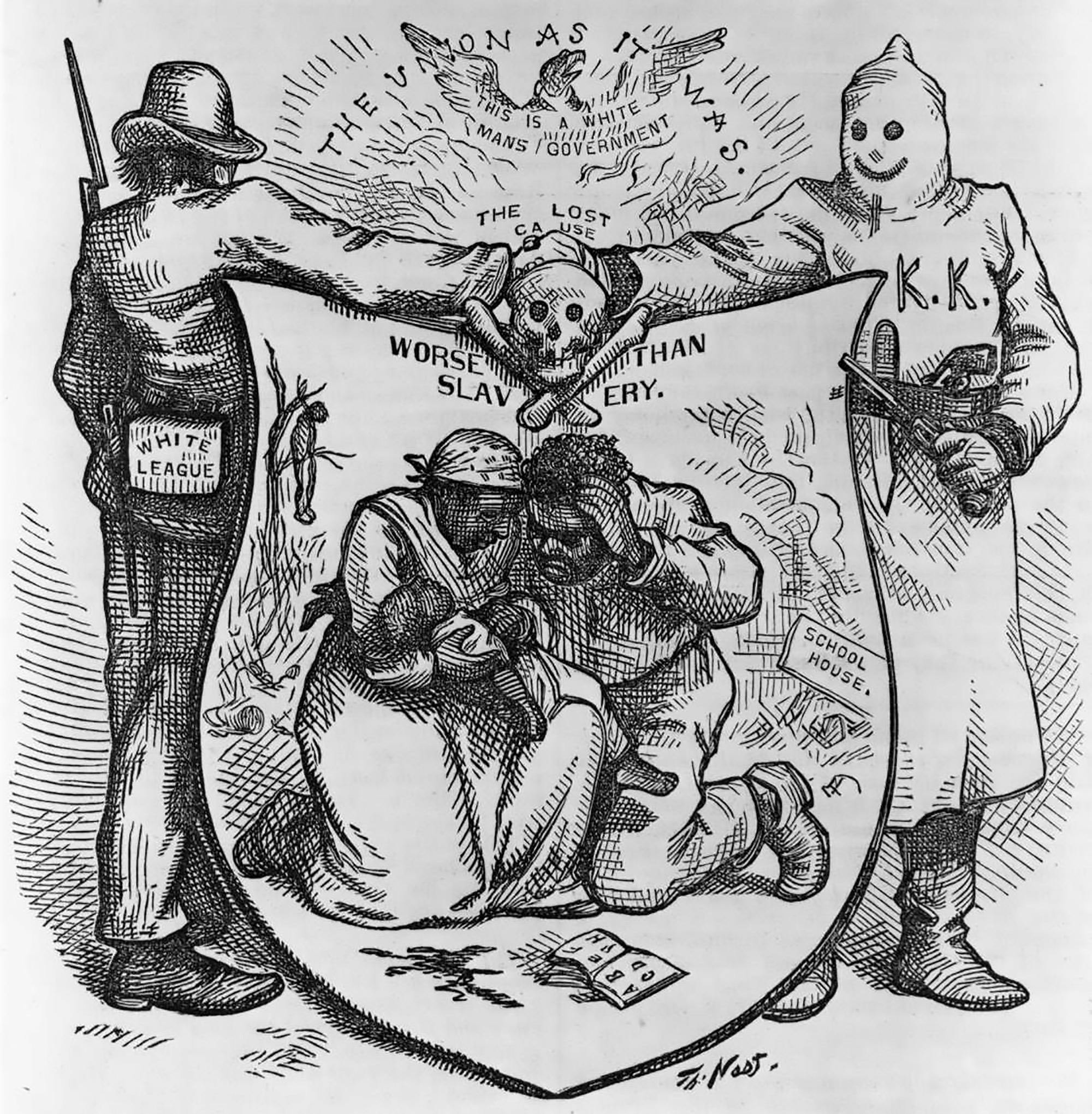
This classic image by Thomas Nast illustrates the plight of freedmen in the years after the war. Flanked by a lynching and a burning school house, a couple huddles over their lifeless child. The reason for their troubles? The reign of terror maintained by many Southern whites, through organizations like the Ku Klux Klan and the White Leagues, in the name of their "Lost Cause" and the perpetuation of a "White Man's Government."
Credit: Library of Congress -
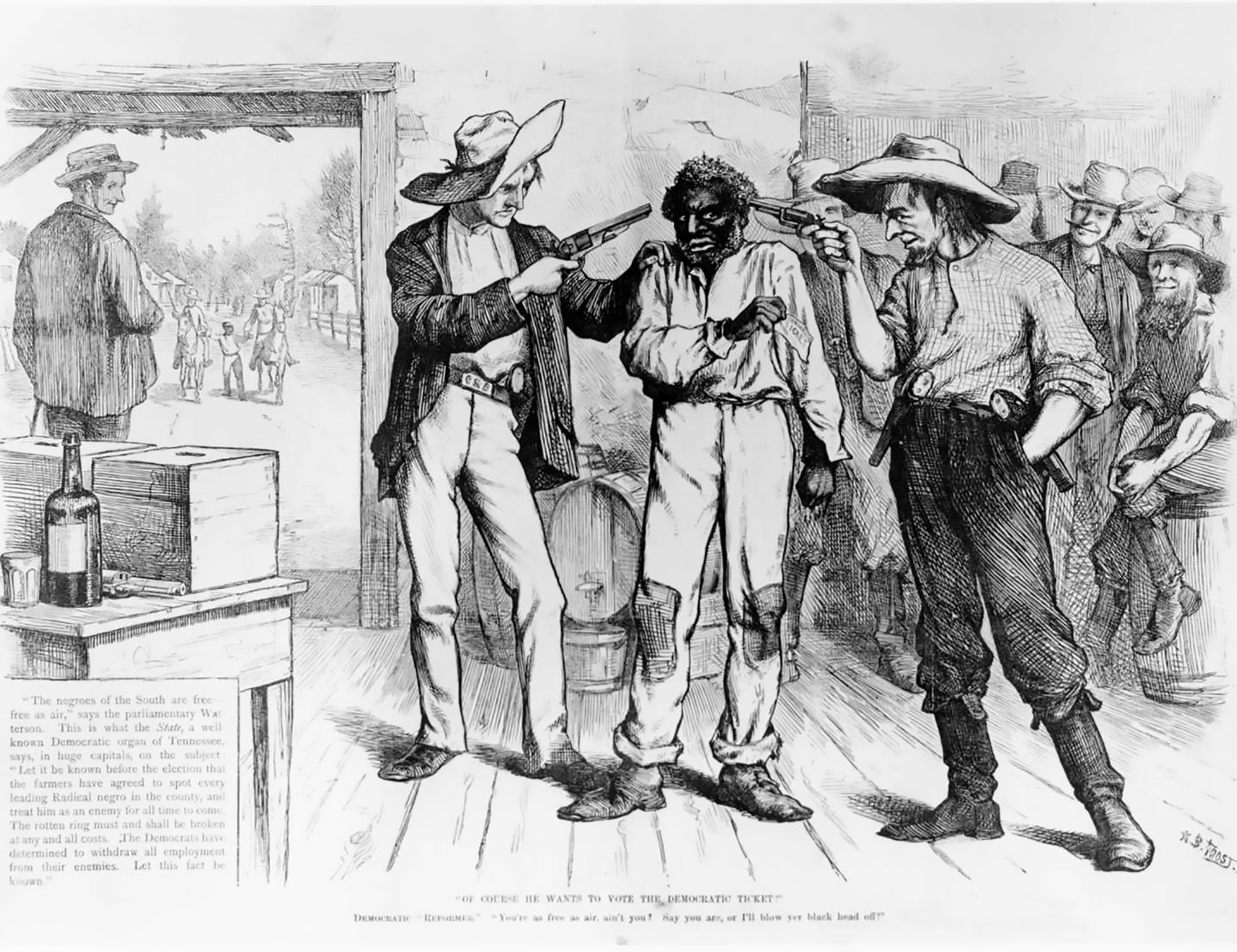
This cartoon graphically undercuts the declaration of a Tennessee Democratic newspaper that "The negroes of the South are free as air" to vote for the Republicans if they choose. In fact, violence and intimidation were widespread, keeping freedmen from the polls and the Republican party from office.
Credit: Library of Congress -
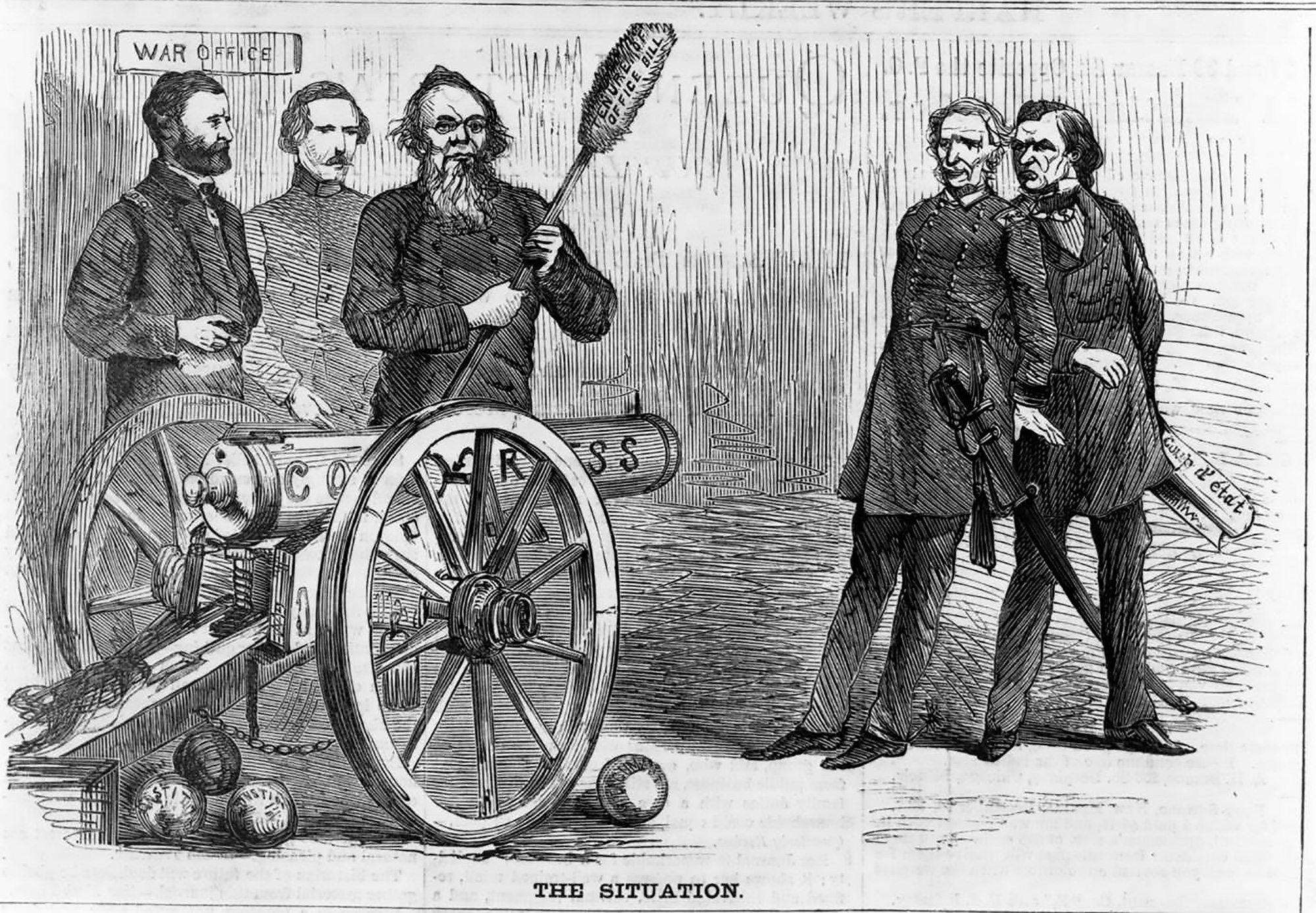
This image applauds Grant and the Republicans for their efforts to impeach President Andrew Johnson, shown hiding behind Lorenzo Thomas (right), whom he had named secretary of war in the incident that precipitated his impeachment in February 1868. The fuse is being lit by the "Tenure of Office Bill," which unleashed the power of Congress and the Constitution against Johnson. The real reason behind Johnsons impeachment, however, was his refusal to enforce the reconstruction program passed by the Republican-controlled Congress.
Credit: Library of Congress -
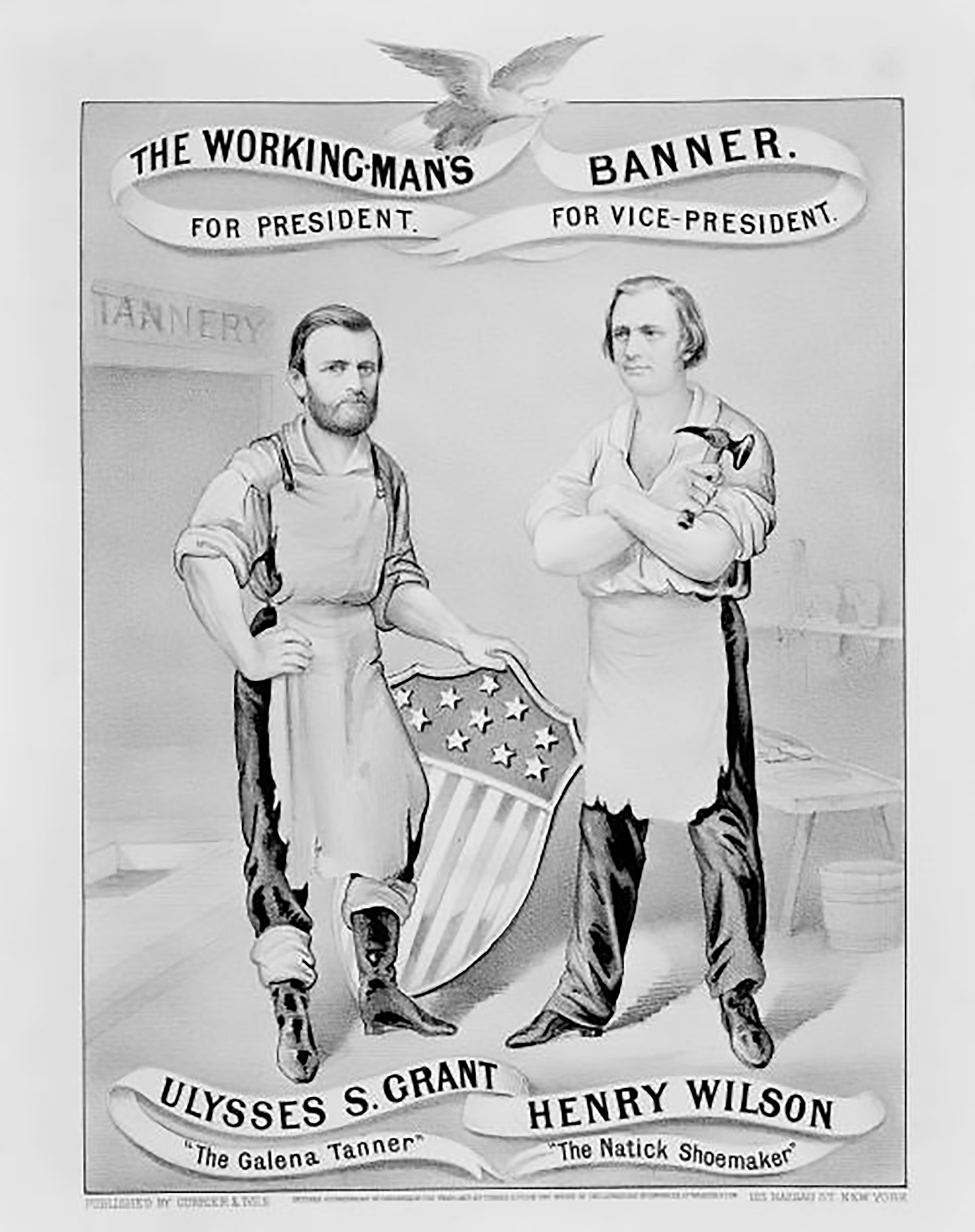
This Republican campaign banner exaggerates General Grant's working class origins in an appeal for the labor vote. Although he despised working in his father's tannery, here Grant finds a use for it, as running mate Henry Wilson does for his origins as a shoemaker in Natick, MA.
Credit: Library of Congress -
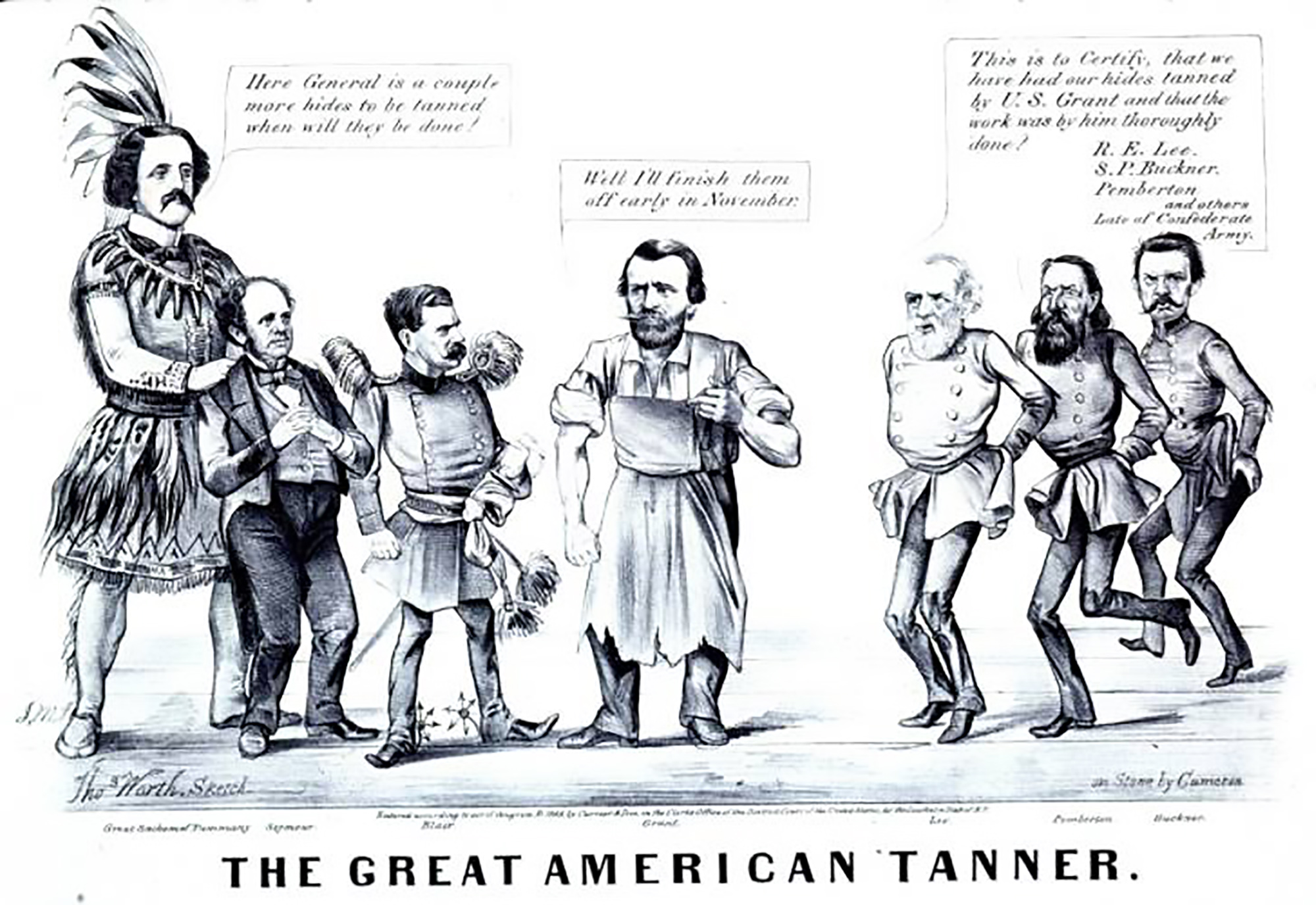
This cartoon supports Grant's 1868 presidential campaign by humorously reinforcing both his toughness and his populist credentials as the "Galena Tanner." New York Governor John Thompson Hoffman presents Grant with "a couple more hides to be tanned" — those belonging to his Democratic opponents, Horatio P. Seymour and running mate Francis P. Blair. Grant confidently replies, "Well I'll finish them off early in November"-- and who can doubt it, with the job he did on Confederate Generals Lee, Buckner and Pemberton, still smarting behind him?
Credit: Library of Congress -
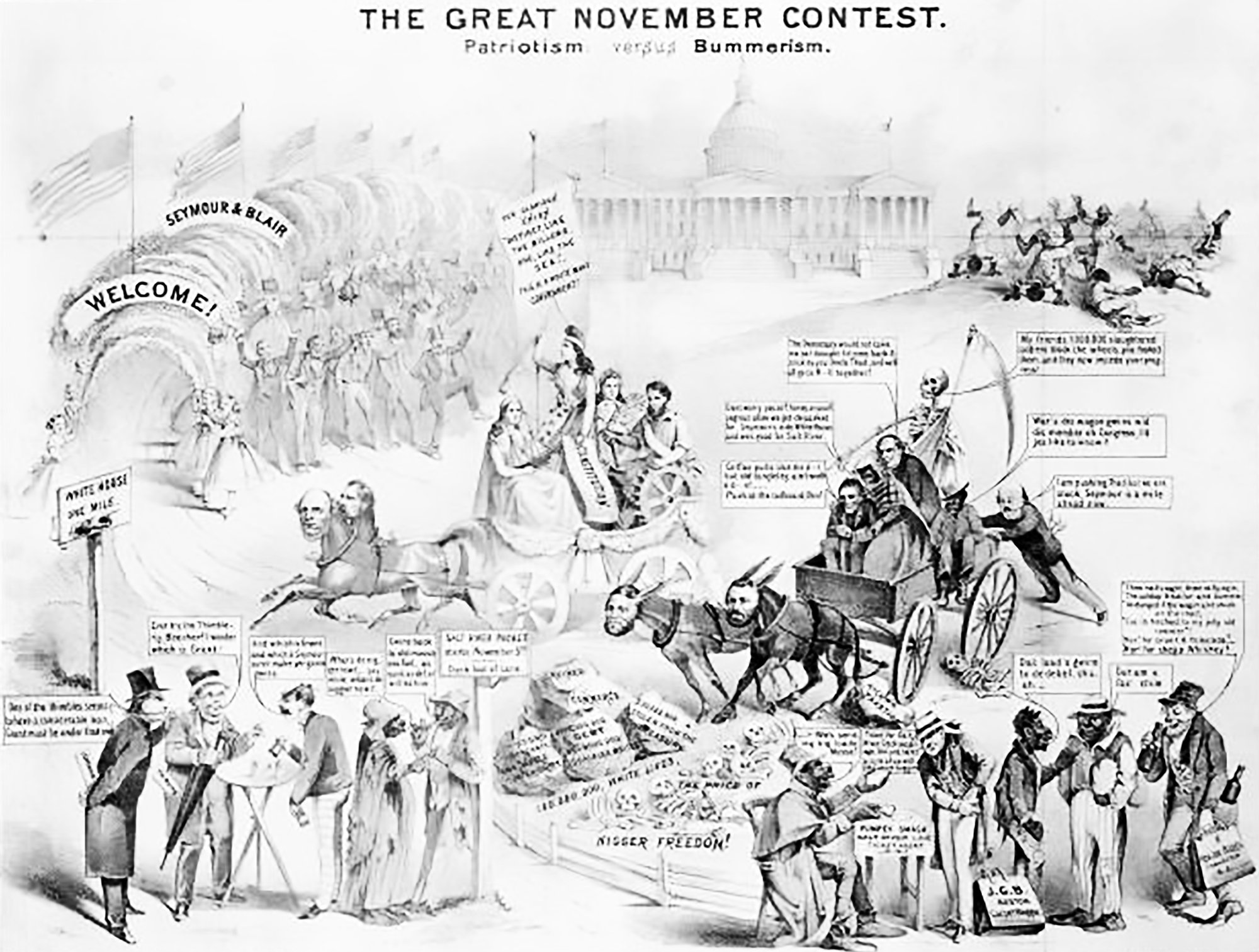
This cartoon embodies the racist argument of the Democrats in 1868. At its core is the contrast between the carriage led by the Democrats' "horses," with the wagon pulled by asses bearing the likeness of Republicans Ulysses Grant and Schuyler Colfax. The Democrats ride toward a victory which would assure a "White Man's Government!" The Republicans are portrayed bogged down by their commitment to "Negro Supremacy."
Credit: Library of Congress -
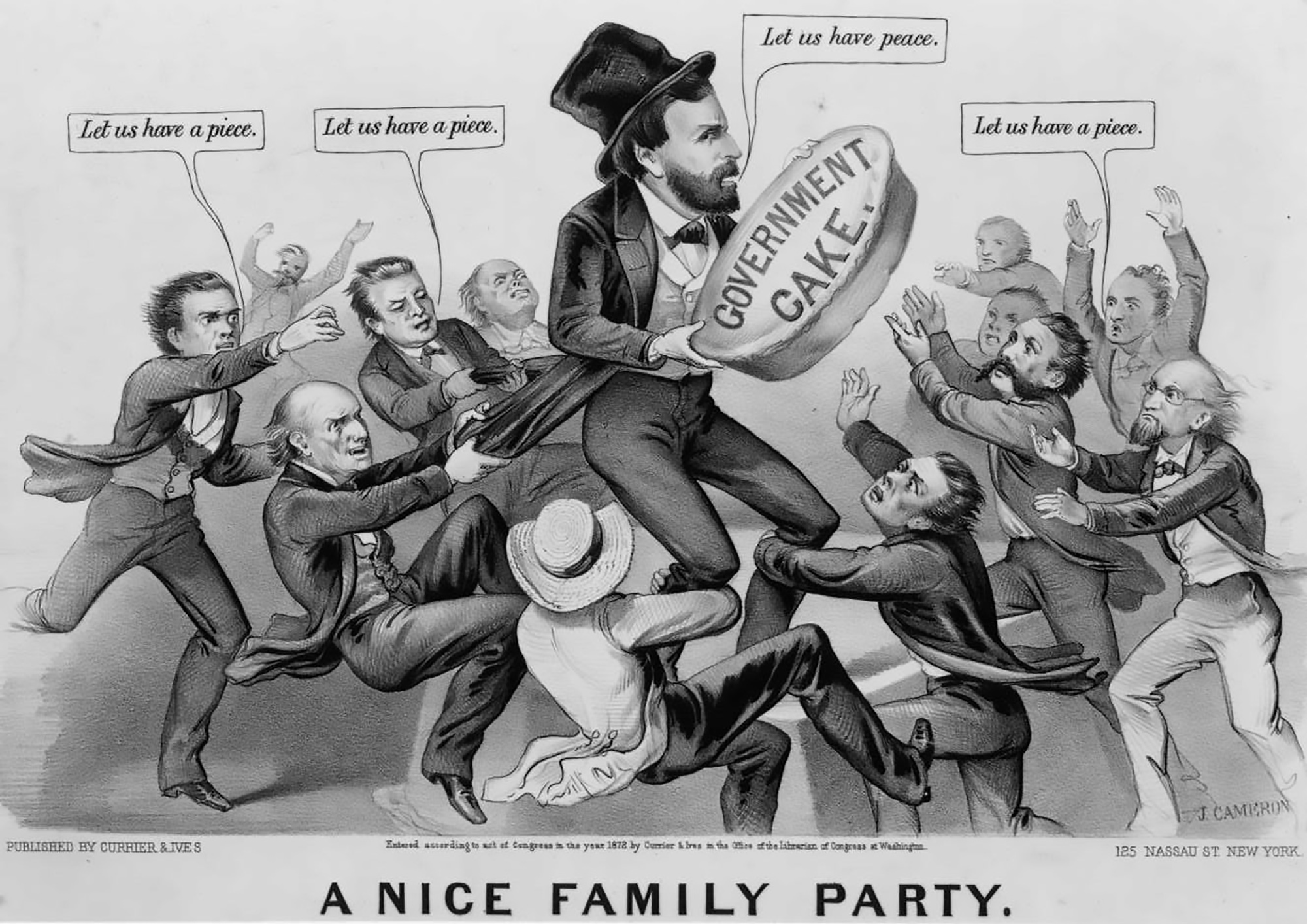
This image by Currier & Ives shows the ugly rush of greedy Grant supporters seeking to profit from his election. The artist makes a strong case for civil service reform (a major issue at the time) by cleverly tweaking Grant's famous 1868 campaign slogan from "Let Us Have Peace" to "Let Us Have a Piece" of the "government cake."
Credit: Library of Congress -
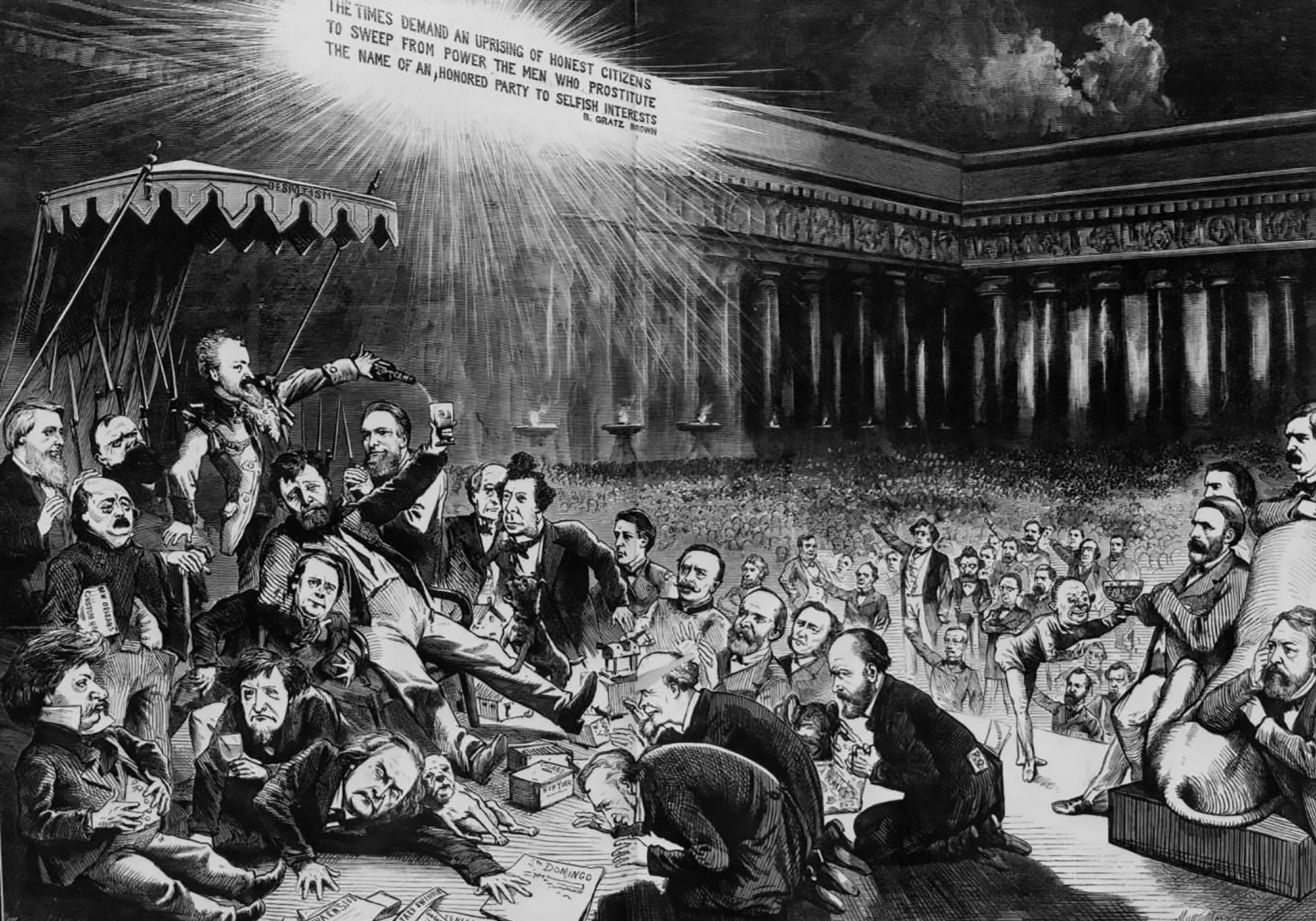
This cartoon is a grab-bag of negative images of Grant and the Republican party. The most obvious message echoes his long-time reputation as a drunk, while the bayonets accuse him of military despotism. But equally damning is the way his supporters — recognizable figures of the time — prostrate themselves in drunken worship of him.
Credit: Library of Congress -

From the 1872 presidential election, this cartoon celebrates Grant as a pillar of strength and the true successor to Abraham Lincoln. In trying to pull Grant down, his opponents show themselves to be against everything he and the Republicans stand for: military victory, emancipation of the slaves, equal rights, and, above all, union.
Credit: Library of Congress -
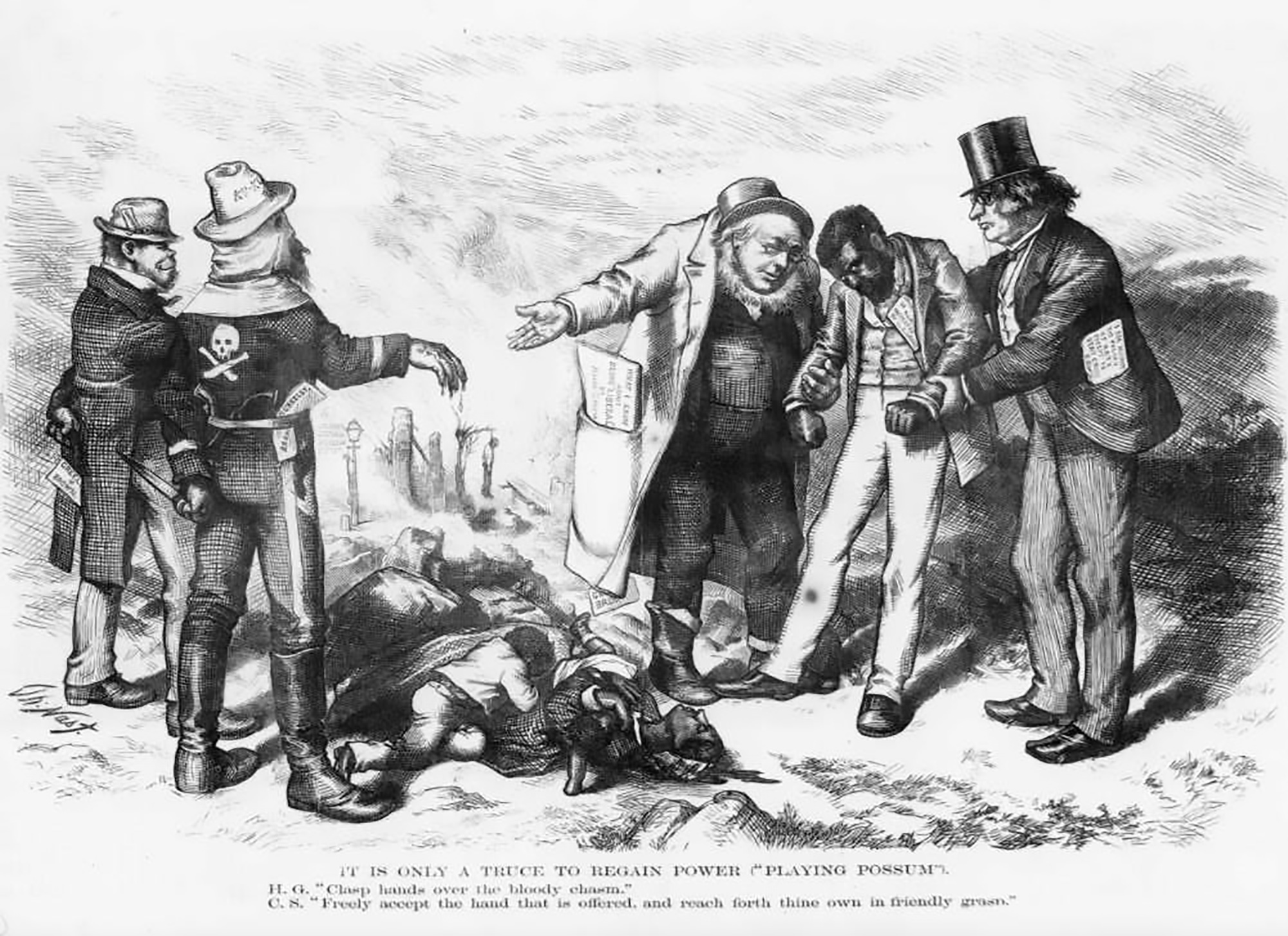
Thomas Nast depicts the real meaning of Democrat Horace Greeley's (center) desire for North and South to "clasp hands over the bloody chasm" of Civil War: showing the freedman at the mercy of the Southern white terrorist, whose right hand is already bloody, and whose left is clutching a knife promising more violence.
Credit: Library of Congress -
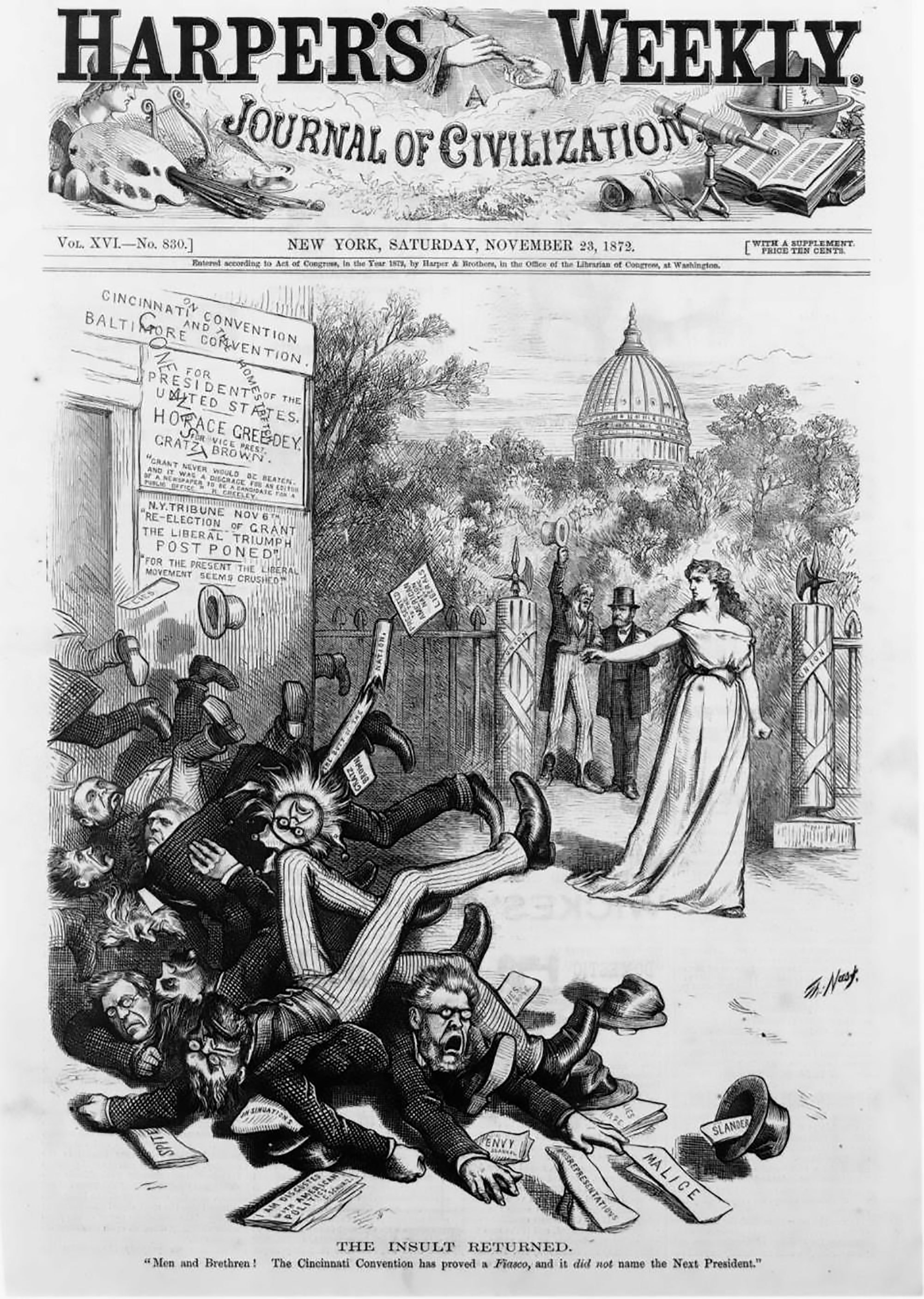
This Thomas Nast cartoon celebrates Grant's victory in the general election of 1872 over the Liberal Republican movement led by Horace Greeley. While an exultant Uncle Sam and a dignified President Grant look on, Lady Liberty hurls Greeley's head back at his supporters, who fall in a heap along with their corrupt ideals.
Credit: Library of Congress -
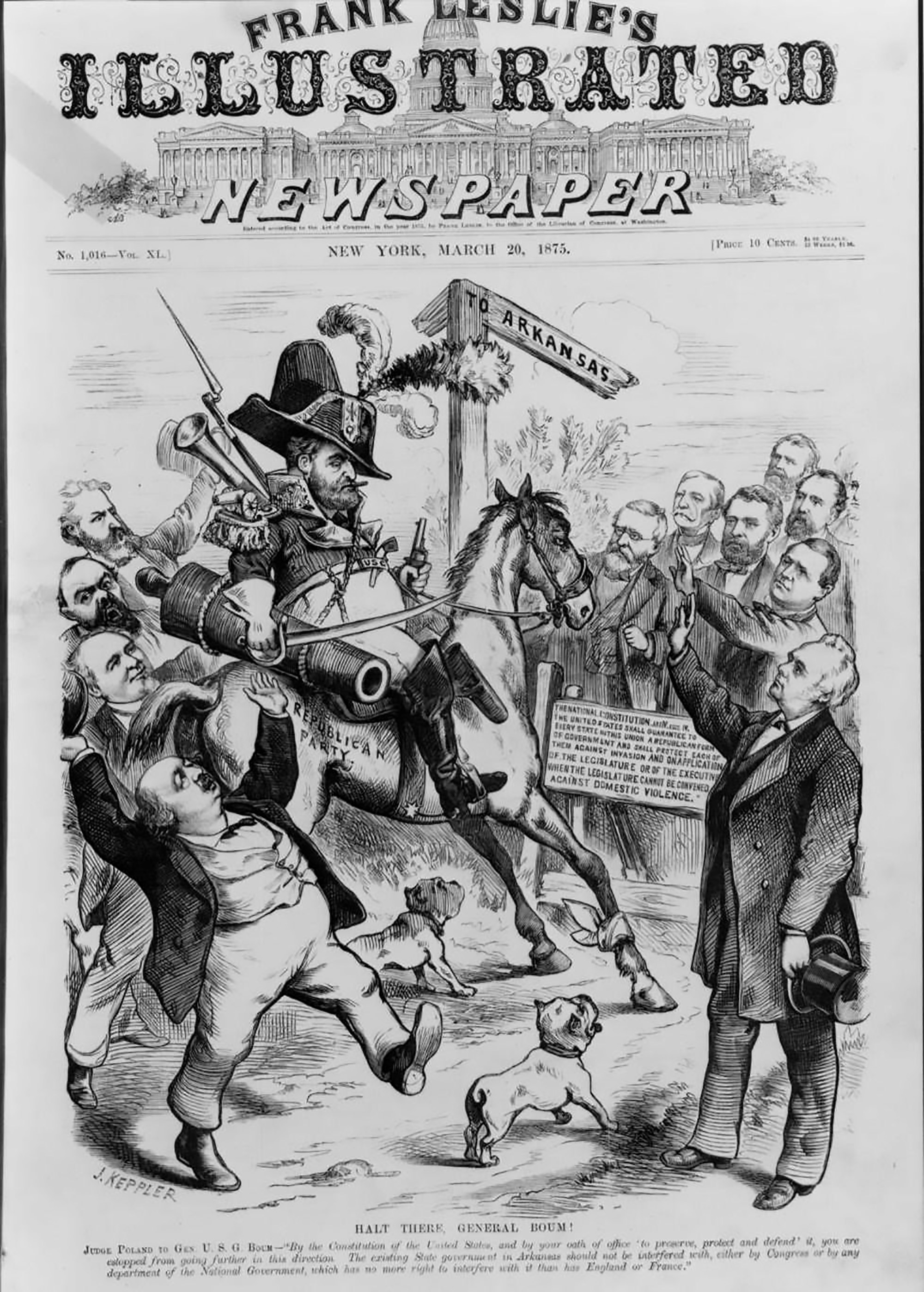
In this cartoon, the artist gives voice to the outrage many felt over federal intervention in Southern states during Reconstruction, usually in order to protect the rights of freedmen. Note the caricature of Grant: overweight, possibly drunk, displaying an excess of military finery (the opposite of his actual dress during the Civil War).
Credit: Widener -
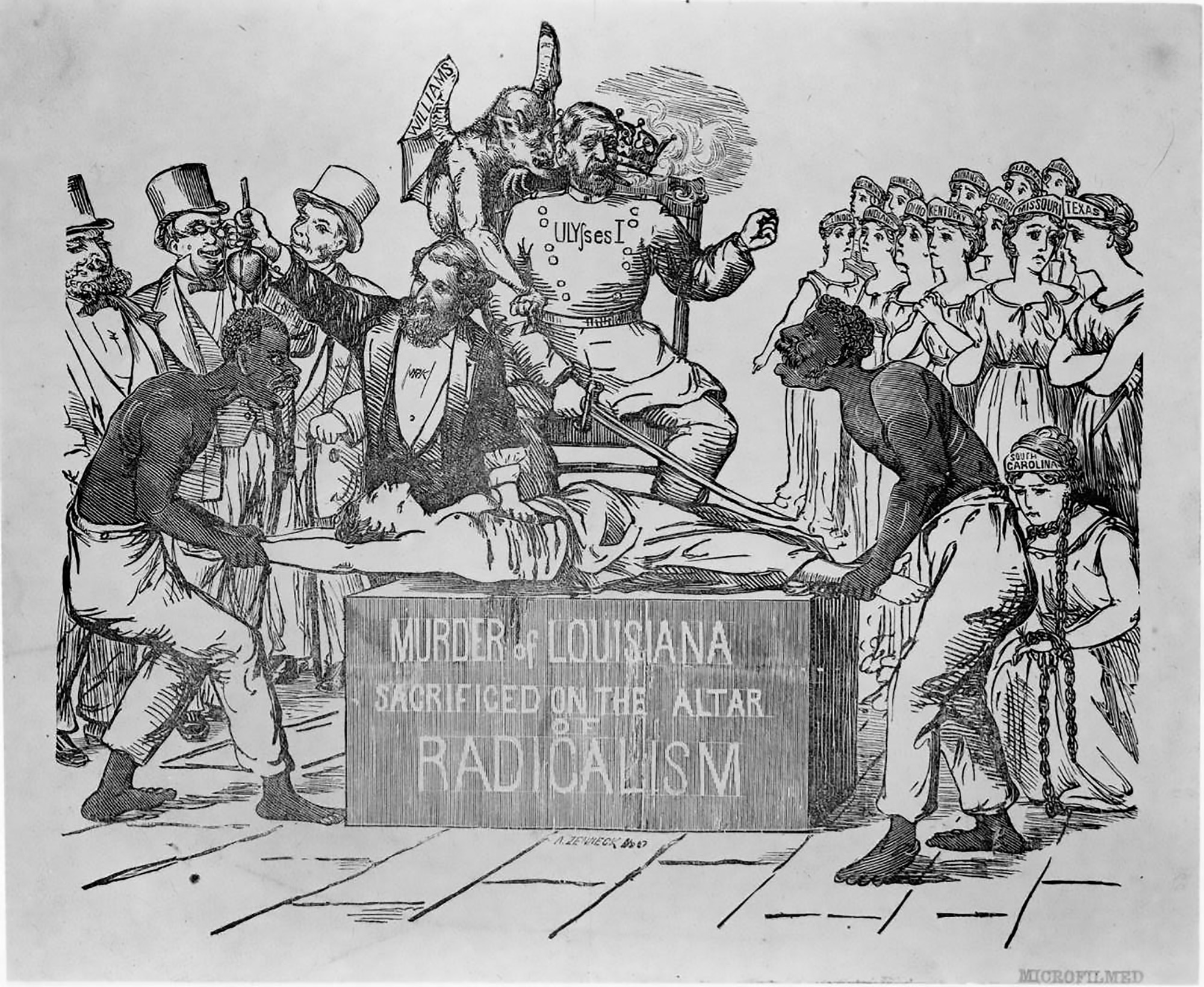
A reaction to Grant's intervention to protect Louisiana freedmen, this drawing shows other states looking on with worry as a dictatorial "Kaiser" Ulysses I "murders" Louisiana in the name of the Radical Republican agenda, with the help of caricatured blacks and bemused "fat cats" from the Eastern establishment.
Credit: Library of Congress -
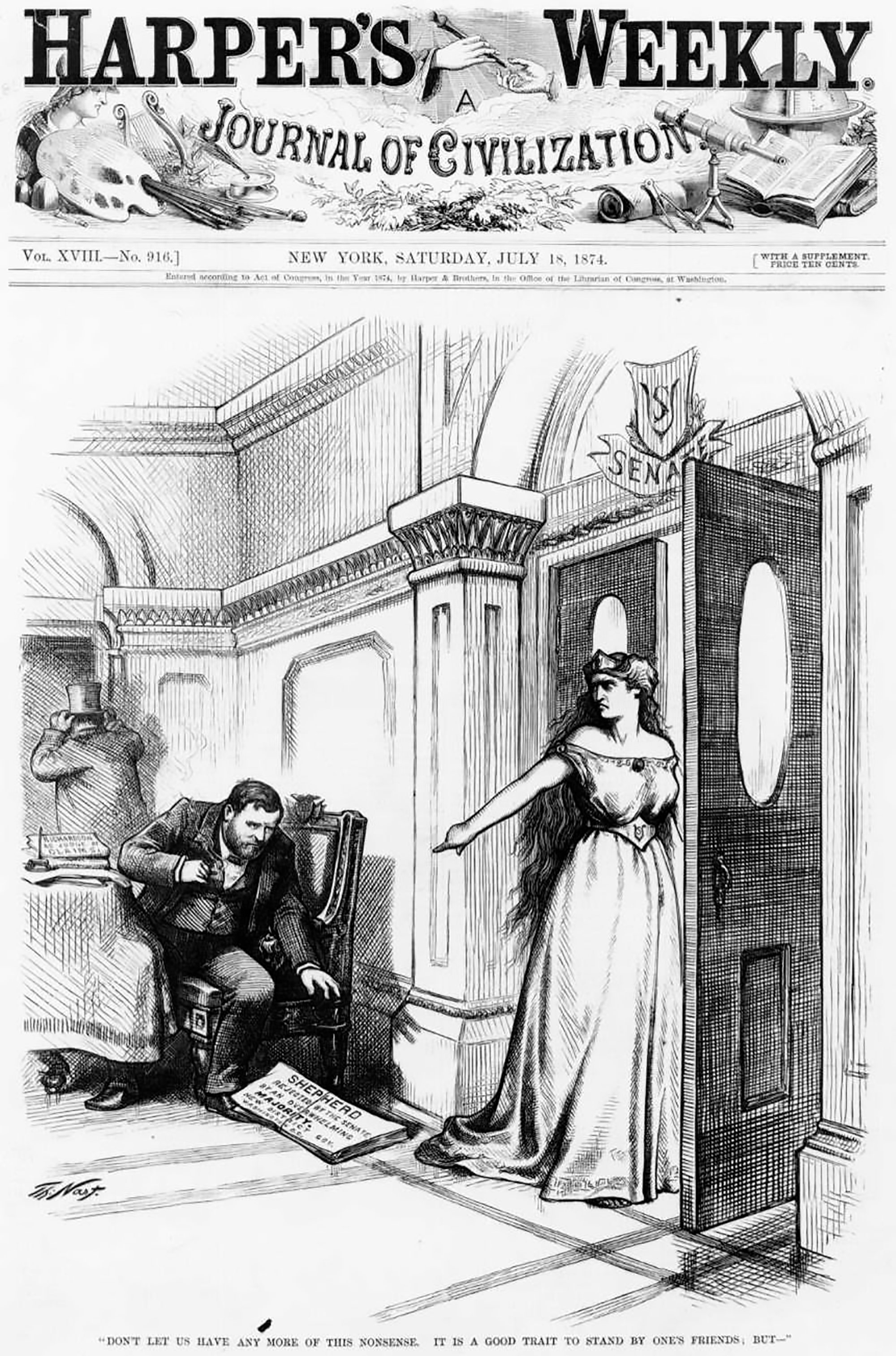
This cartoon expresses the frustration of Grant's supporters, who watched as scandals during his second term dominated headlines and undermined his reputation. Lady Liberty's words to the president - "Don't let us have any more of this nonsense. It is good to stand by one's friends, but..." - express a common view that Grant was not corrupt, but overly trusting, even naive
Credit: Library of Congress -
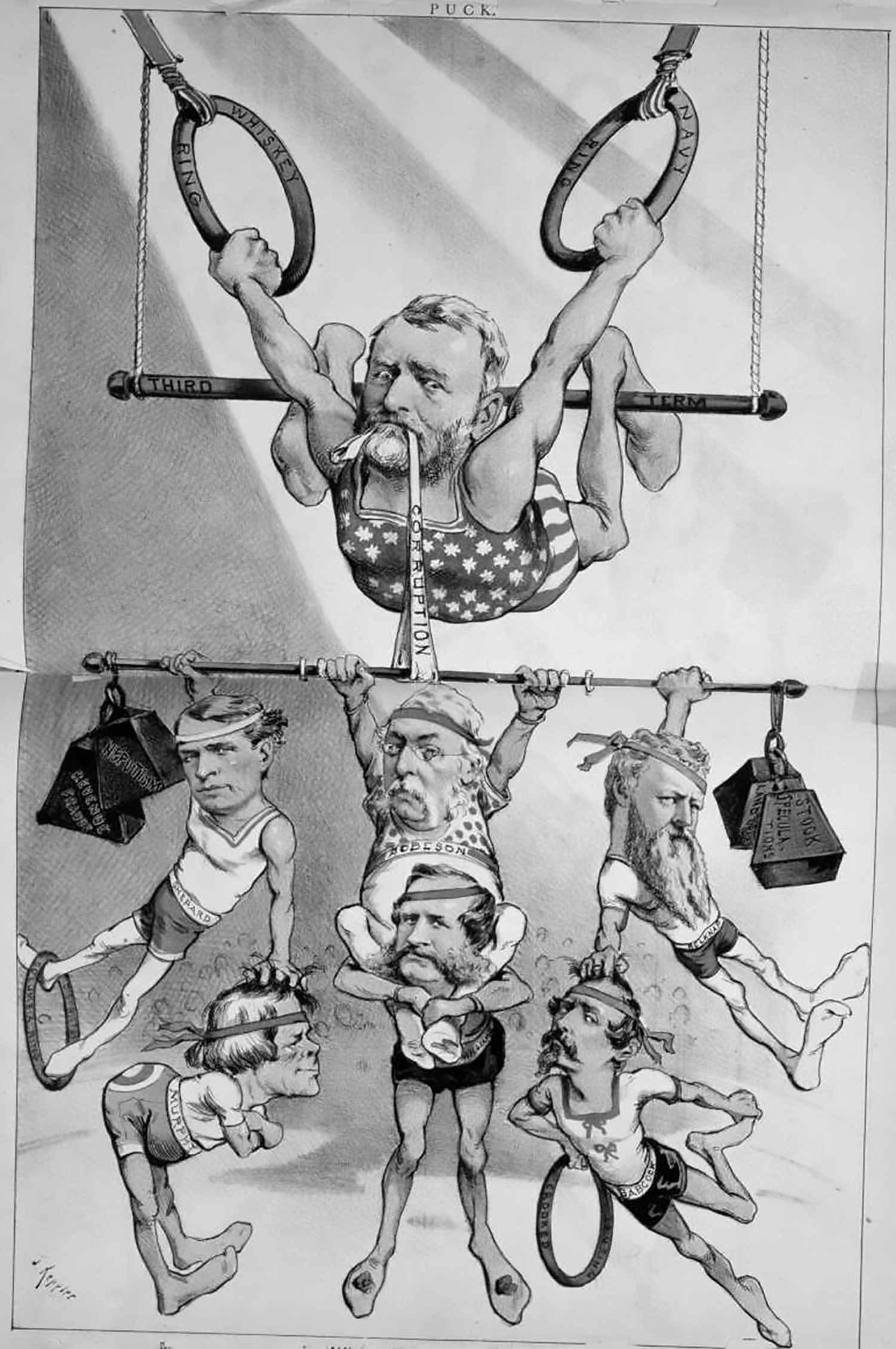
Reminding people of the various "rings," or corruption scandals which marred Grant's administration, this cartoon argues against a third presidential term for Grant in 1880 -- something advocated by many after his return from a long trip around the world.
Credit: Library of Congress




